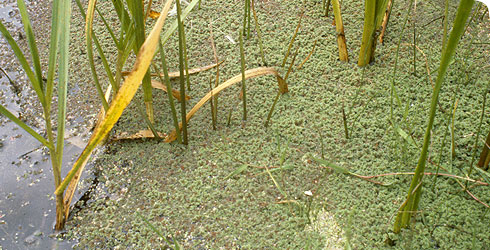Distribution and ecology
This species is native to Central and South America and western North America, but is now widely established in the UK and Ireland, and across Europe, Morocco, southern Africa, Australia, New Zealand, Hawaii and parts of Asia.
It was introduced into the UK in the late nineteenth century and spread through southern England. The current distribution can be seen on the Botanical Society of the British Isles Mapping Portal.
Azolla filiculoides was native in England and Europe in interglacial periods - fossils have been found in Suffolk, Netherlands, Germany and Russia.
Ecology
Azolla filiculoides forms extensive colonies on still or slow moving freshwater bodies such as ponds, lakes, ditches and canals. It thrives in eutrophic conditions and can out-compete other floating water plants such as species of Lemna.
It can spread by water flow along dykes or streams but is also spread by birds, animals and man. Man is probably responsible for the major spread, either by discarding excess plants from aquaria or garden ponds, or in some countries through introduction of Azolla as a green manure.
A. filiculoides grows and divides very rapidly in spring and summer, and can cover a pond in just a few weeks. It is extremely buoyant and often covers the surface of the water body to such an extent that the plants grow over one another to form a dense mat that appears solid - accidents have occurred when people have tried to walk on it, not realising there was water underneath.
